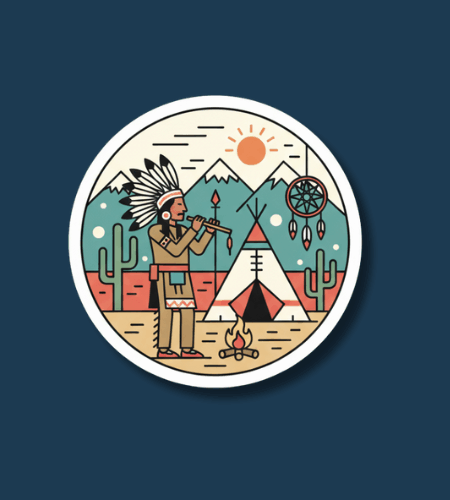National Native American Day is a day to honor and celebrate the cultures, traditions, and contributions of Native American peoples. In many places, it’s observed on the second Monday of October, coinciding with or replacing Columbus Day in some states.
Table of Contents
History of National Native American Day
Some U.S. states have formally adopted Native American Day as an alternative to Columbus Day. For example, South Dakota replaced Columbus Day with Native American Day in 1990 as part of a “Year of Reconciliation.” In California, the holiday is observed on the fourth Friday in September.
Over time, the observance has grown beyond individual states, as more communities seek to recognize Indigenous histories and presence rather than celebrating colonial narratives alone.
Why is National Native American Day important?
This day offers a counterbalance to commemorations of European arrival by centering the voices and contributions of Indigenous peoples. It’s a moment to reflect on nations and societies that existed long before colonization, whose cultures, governance, art, and knowledge continue to shape the land and people today.
It also provides opportunity for healing and change: acknowledging historical injustices, supporting Indigenous sovereignty, and connecting public awareness with action. Rather than glossing over tension, the day invites respectful reflection, commitment to justice, and deeper listening to Native communities.
Some of what people often emphasize about this day
- honoring living Indigenous cultures, not just historical ones
- remembering the resilience and survival of Native communities
- acknowledging past injustices and their ongoing impacts
- supporting Indigenous leadership, rights, and self-determination
- promoting education about tribal histories and contributions
How to Observe National Native American Day
Observing this day meaningfully means doing more than token gestures. You might attend cultural events—powwows, storytelling sessions, art exhibits—where Indigenous voices lead. It’s a chance to learn directly, rather than relying on second-hand narratives.
You can also use your platform to amplify Indigenous creators—read books, purchase art or goods made by Native artists, donate to tribes or organizations, and engage in allyship through acts that respect community autonomy and priorities. In educational settings, it’s a good moment to shift curricula to include Native perspectives, stories, and sovereignty.
Here are simple ideas you could try
- attend a local Indigenous cultural event or gathering
- read books, poems, or essays by Native authors
- share Indigenous-led resources or stories with your circle
- support Indigenous artists, businesses, or cultural projects
- reflect on the Indigenous history of your land and community
Native American Day Dates Table
| Year | Date | Day |
|---|---|---|
| 2025 | October 13 | Monday |
| 2026 | October 12 | Monday |
| 2027 | October 11 | Monday |
| 2028 | October 9 | Monday |
| 2029 | October 8 | Monday |
Subscribe to our newsletter and never miss a holiday again!

